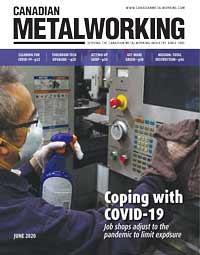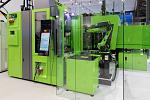Associate Editor
- FMA
- The Fabricator
- FABTECH
- Canadian Metalworking
Toolroom tech upgrade
Volant updated its vending cabinets for a better tool management strategy
- By Lindsay Luminoso
- June 22, 2020
- Article
- Automation and Software
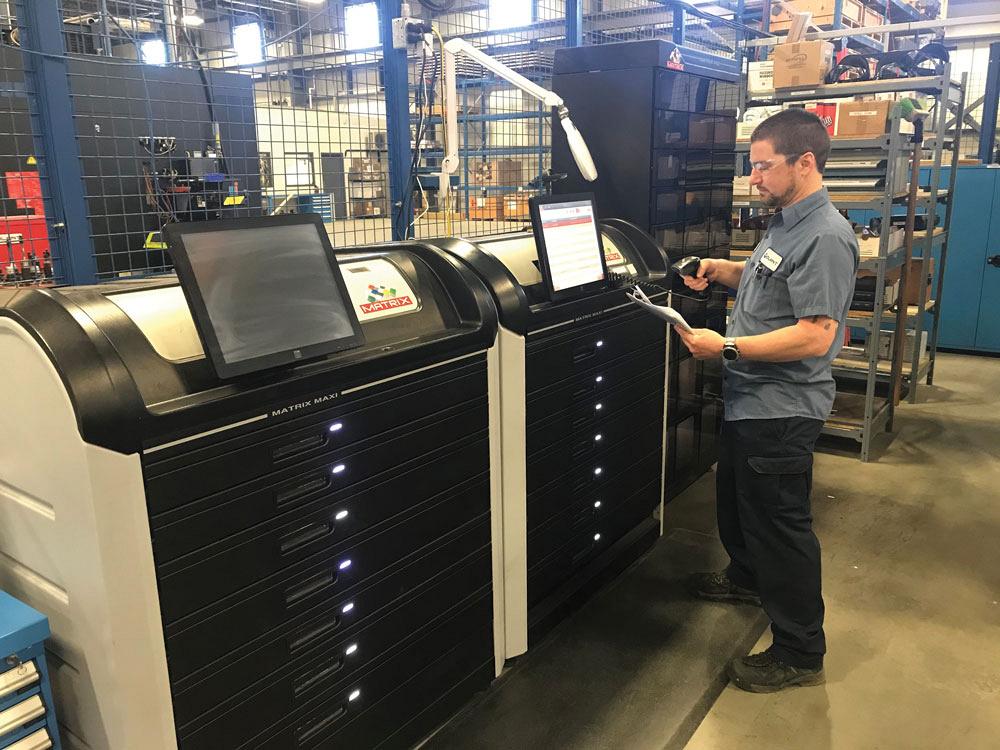
Volant’s programming team are continually adding bar codes to set up sheets that correspond to the tools in the Matrix system. This allows the company’s machinists to scan the sheets and get all the tools needed without having to search.
Volant has been a fixture in the oil and gas industry for the better part of 20 years. The company got its start as a spinoff from an engineering consulting company and grew to be a manufacturer of casing running tools and accessories for oil and gas well construction. Located in Edmonton, the company operates an 80,000-sq.-ft. main building housing upwards of 170 employees, depending on market fluctuation. However, even in the past few years when times were slow in the oil and gas sector across the province, Volant’s business was booming.
"I think it wasn’t until the oil and gas industry started seeing a need for our products and their added flexibility to the manufacturing process that we really started to take off," said Lockey Rhynold, product manager, Volant Products. "The company is heavily populated by engineers, and their focus is on constant development of tooling, making a light footprint in industry while making it safer. That’s the big thing, and it’s helped us maintain a steady stream of non-stop business."
The machine shop currently has 16 CNC machines, including milling, full 5-axis, and multitasking machines. The shop can perform basic machining all the way up to very complex component manufacturing.
With the focus on making processes more efficient and safer, Rhynold began to rethink the shop’s existing tool vending system.
"We wanted something with more bells and whistles than we were currently getting," said Rhynold. "So we decided to set out on a journey to find another vending system that had some of the features we were looking for. This gave us the ability to really start from scratch and see what was out on the market. What we found was that many of the offerings used the same infrastructure software. This meant that how the systems operated was basically all the same; the cabinets were the only thing that was different."
Matrix Vending System
From the onset toolroom attendant and CNC programmer Ron Vocke was heavily involved in the discussion. He knew the existing system and areas that could possibly be improved with additional features and technology.
"It wasn’t just the technology we were interested in updating; we also wanted to increase the size of the cabinets as we were continuing to grow our cutting tool library," said Vocke. "One thing that really attracted us to the Matrix vending system was its developer. Tooling company Iscar seemed to have a much better understanding of how this type of system would be used in a manufacturing environment rather than for just general industry."
Volant worked with A.C.T. Equipment Sales, Edmonton, to ensure that the vending system was right for them. In terms of the storage capacity, A.C.T. Equipment visited the facility and was able to size up all the tools that would need to be housed in the vending system. From there they were able to set up two cabinets that are linked to one another, along with a mini-locker system that is used for larger tools and equipment that cannot fit within the cabinets. This configuration maximized space in the shop and enabled Volant to condense its tooling dramatically in this small space.
Features
For Rhynold, the most important feature of the system was the ability to kit tools together for specific projects.
"For example, let’s say we wanted a CNMG holder," he said. "Kitting gives us the seats, screws, and everything that pertains to that holder, allowing us to get down to the nitty gritty easily and effectively. This has allowed our staff to spend less time looking for screws and shims that will fit. We really were looking to reduce the time our staff needlessly spent in the toolroom."
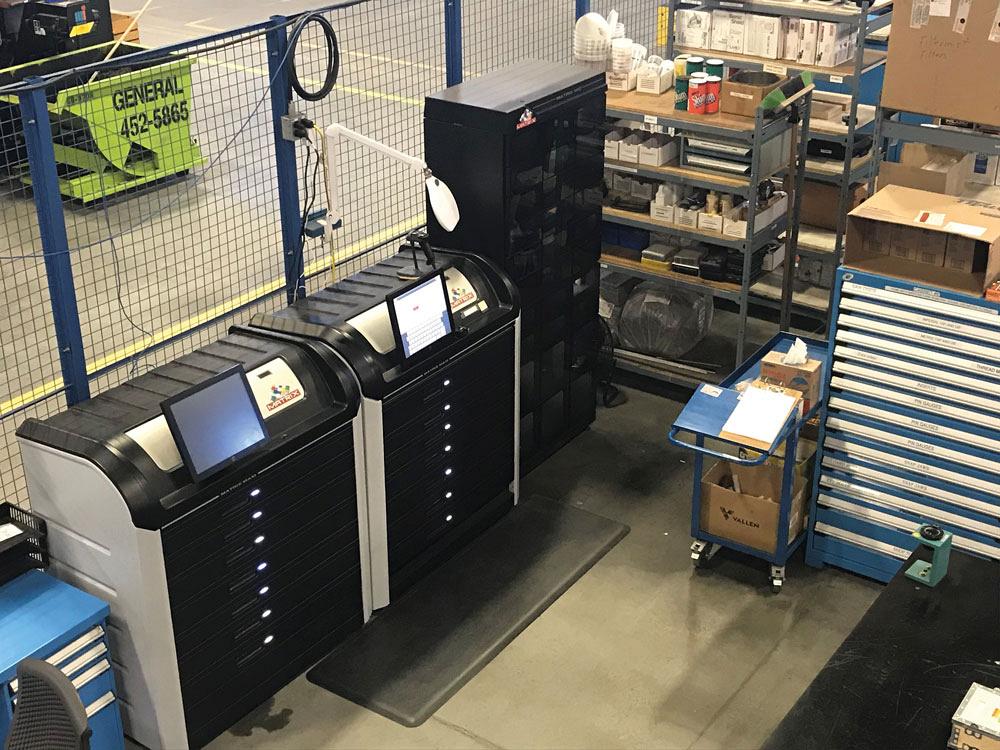
Volant worked with A.C.T. Equipment Sales, in Edmonton, to set up its vending system, which included two Matrix cabinets that are linked to one another, along with a mini-locker system that is used for larger tools and equipment that cannot fit within the cabinets.
Having tools set up in these kits would make it easier for operators to go into the toolroom and know exactly all the tools and accessories that they would need to complete the job. Prior to adopting kitting, operators could spend a significant amount of time looking through cabinet after cabinet for the right screw. In many cases, they would grab a screw and think it was correct even though it wasn’t, which would cause failures down the line. So kitting was an important feature for the company.
Rhynold added that another interesting feature that they weren’t necessarily looking for but have found beneficial is the Matrix’s shopping cart-like functionality. An operator can load up all necessary tools for a job, whether it’s two or 30, check the list against what is needed, and then click Issue and the vending system provides all necessary tools at once rather than one by one.
For Vocke, one of the most important features he wanted was easily searchable tools. Volant’s existing system wasn’t user-friendly, and operators and workers often were unable to find what they needed quickly, if at all.
"I have to say part of that was on us for not coming up with a proper naming convention, nomenclature, and that sort of thing," said Vocke. "So once we decided to go to a new system, I wanted to make sure that it had the ability to increase descriptions and include more comprehensive search parameters."
According to Rhynold, Vocke spent a great deal of time relabelling all the tools and everything going into the system. He wanted to ensure that, although everyone has their own industry-specific naming conventions, the new system would be able to capture it all. He included all appropriate names that were searchable so every worker coming in would be able to find exactly what they were looking for regardless of what they called it.
The duo made sure to discuss this with the guys on the shop floor, to see what they wanted more of or less of in a system. Was having a seven-digit ID code or part number beneficial, or was it better to have a larger description section with keywords? The system allows for many different fields of information to be added.
"The system can search by a number of different parameters, including keywords," said Vocke. "We’ve tried to adopt a few of the common names that are known. It just gives more flexibility for workers to find what they need. And I think we immediately saw huge gains for people able to find what they needed."
Vocke added that A.C.T. was especially helpful during the process and was able to mass-upload everything from the shop’s previous system, making it an easy transition from one system to another. Within a week the system was set up and basic training allowed the team to hit the ground running.
Tool Management Strategies
When it comes to developing a tool management strategy, data and reporting are essential components, and that’s exactly what this system provides Volant. There are over 200 standard reports that can be customized depending on the metrics needed, whether that’s an accounting of which workers are using what tools and for how long, or an overall value of inventory currently in the cabinet.
"By utilizing the whole management system and taking the features that come with it, we are able to better understand the value of our inventory that we are carrying," said Rhynold. "Currently we stock upwards of $250,000 in tooling. So now we can track what we have in stock, what’s being used regularly, infrequently, or not at all. This information has also allowed us to talk to our vendors and return stock that is unused. Now we’re slowly working toward minimizing what we need in stock. Back in the day you’d just buy it because you thought you would need it and then it would go missing. That’s just money lost. This system and its data reports are really helping us better align our stock management with our overall needs."
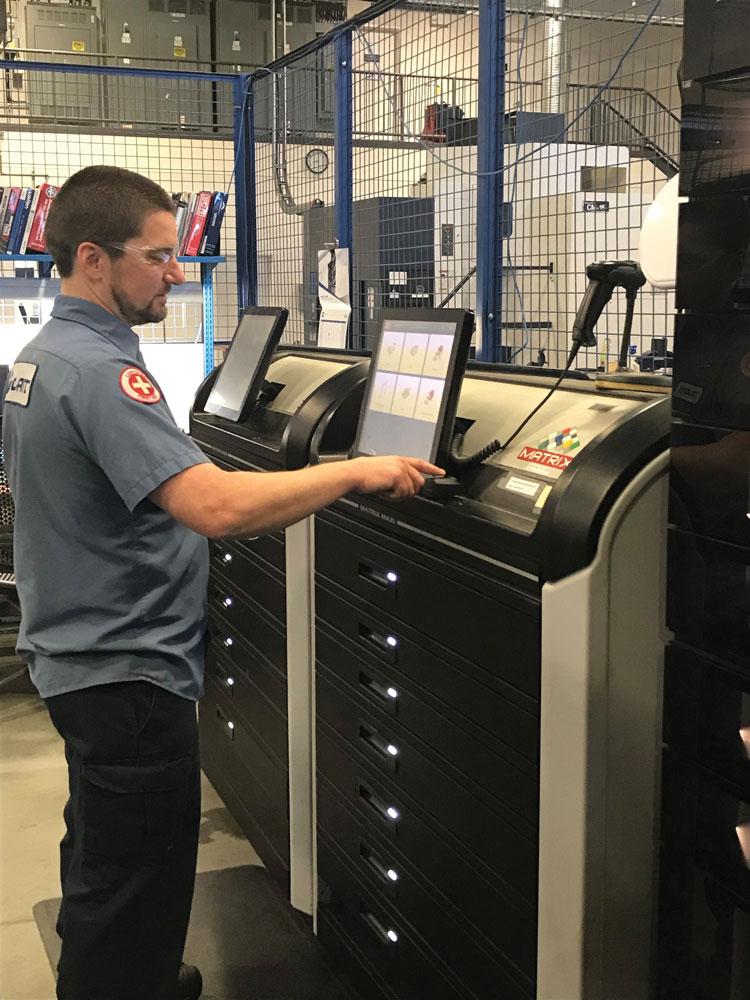
The software unlocks drawers and bins electronically to pre-qualified users, who access them with bar codes or fingerprints. This has helped Volant analyze where and by whom tools are used and to adjust inventory as needed.
For Vocke, the system provides another feature that helps with inventory management: the ability to send alarms and notifications when the last tool is removed from the cabinet. Although it does have minimums and maximums that they’ve built it, Vocke noted that it’s great to have another system in place to ensure the toolroom is fully stocked.
"When you have a supplier that’s willing to work with you on inventory management, that’s a huge advantage," said Vocke. "With our supplier, we do quarterly reviews of our stock, where any excess that we purchased and didn’t use can 100 per cent be returned. That’s just one way that this software is giving us opportunities for growth. However, it is important to note that it does take time to collect data; this system is really only as good as the data it collects. In order to get results, there needs to be quite a bit of data."
When a shop is looking to develop a tooling management strategy, there’s definitely a break-in period between setup and insightful reporting. Volant is coming to the end of the data-capture period and is now able to use the data to make actionable business decisions.
"The biggest thing with vending is you need to invest time and money to set it up properly," said Rhynold. "And it’s only as good as the data you put into it. So the more effort we put into it, the more we’re going to get out of it. And I think that’s where companies lose interest in vending very quickly—they just don’t want to invest the time and energy or they just simply want to know if they have an insert in stock. But we want to know far more things than just basic stock; we want to utilize this system for kitting and having our tools set up and ready to go for any job that comes in. We are trying to take tool management to a whole new level. And that’s where we’re at right now."
Areas of Opportunity
Rhynold added that one of the areas he hopes to take more advantage of is the software’s offline seats. Volant has an extensive programming department that can now use the system’s offline programming to create setup sheets for the workers on the shop floor. The programmers have the seat on their desktop and are adding bar codes to set up sheets that correspond to the tools in the Matrix system. This now allows the company’s machinists to go to the system, which has a scanner on it, scan the sheets, and get all the tools needed without having to search.
"Our programming team has full visibility of what’s going on in the system without needing to step foot in the toolroom," said Rhynold. "They can look at patterns or issues and make adjustments to better help our machinists find what they need. With this, we are seeing trips to the storeroom limited in terms of frequency and time spent. It also will help us to see patterns so we can adjust our tool management strategy to achieve better results."
Associate Editor Lindsay Luminoso can be reached at lluminoso@canadianmetalworking.com.
Photos courtesy of Volant Products, www.volantproducts.ca.
Iscar, www.iscar.com
A.C.T. Equipment Sales, www.actequipment.com
About the Author

Lindsay Luminoso
1154 Warden Avenue
Toronto, M1R 0A1 Canada
Lindsay Luminoso, associate editor, contributes to both Canadian Metalworking and Canadian Fabricating & Welding. She worked as an associate editor/web editor, at Canadian Metalworking from 2014-2016 and was most recently an associate editor at Design Engineering.
Luminoso has a bachelor of arts from Carleton University, a bachelor of education from Ottawa University, and a graduate certificate in book, magazine, and digital publishing from Centennial College.
Related Companies
subscribe now


Keep up to date with the latest news, events, and technology for all things metal from our pair of monthly magazines written specifically for Canadian manufacturers!
Start Your Free Subscription- Industry Events
Automate 2024
- May 6 - 9, 2024
- Chicago, IL
ANCA Open House
- May 7 - 8, 2024
- Wixom, MI
17th annual Joint Open House
- May 8 - 9, 2024
- Oakville and Mississauga, ON Canada
MME Saskatoon
- May 28, 2024
- Saskatoon, SK Canada
CME's Health & Safety Symposium for Manufacturers
- May 29, 2024
- Mississauga, ON Canada













